Check the clutch disc friction linings for wear and loose rivets, check the disc for edge damage, cracks, damaged springs and worn splines.

Typical broken clutch disc springs
If a large unevenness is found, the friction pads can be cleaned with sandpaper.
Determine clutch lining wear by measuring the distance from the surface of the lining to the top of the rivet heads with a vernier caliper.
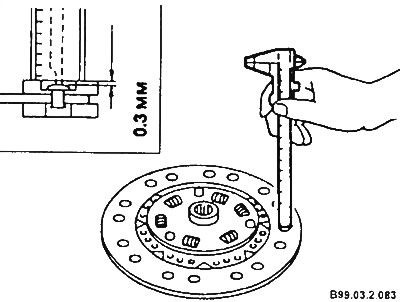
If this dimension is less than 0.20 mm, the disc or pads must be changed.
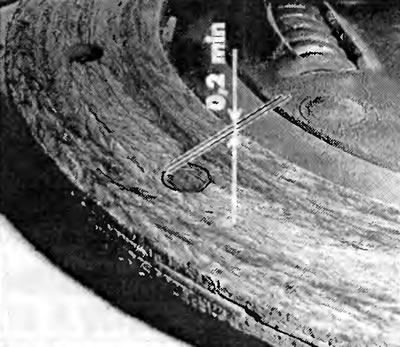
CAUTION: It is always best to replace the driven disc assembly to avoid further trouble.
Manufacturers do not recommend replacing friction linings alone. The personal experience of the authors confirms this.
To check the runout of the driven disk, fix it between two rods or clamp the clutch shaft between the stop centers of the lathe.
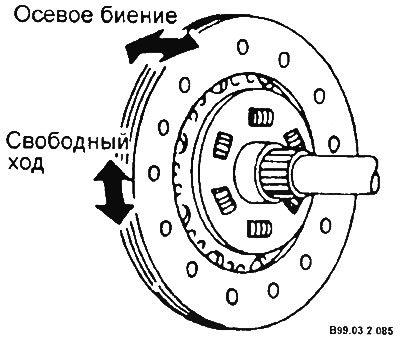
On a special holder, install a dial indicator next to the disk so that the indicator finger is located against the edge of the disk (at a distance of approximately 5 mm). Slowly rotate the dial and read the dial indicator. If the reading is greater than 0.5 mm, you can carefully trim the disc with pliers or replace the disc.
Check the sliding of the driven disk hub on the gear rim of the clutch shaft. To do this, put on the disk and grab its outer edge with your thumb and forefinger. Move the disk in the direction of rotation. If the backlash is more than 0.4 mm, we can talk about the wear of the wedge-shaped teeth, which most often occurs in the driven disk.
Check the inner ends of the diaphragm spring for wear. If deep lapping marks are found, the clutch must be changed.
The ends of the membrane spring must be at the same height within 0.5 mm. The bent ends of the spring can be straightened. For this, a special tool is usually used, but the ends can also be bent using a special notched strip.
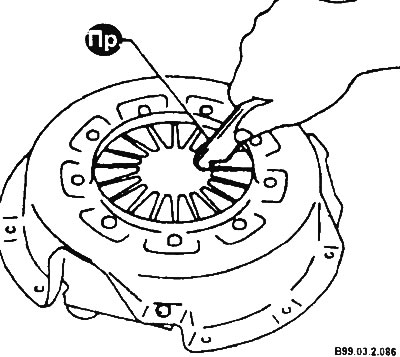
Place a steel ruler on the friction surface of the clutch pressure plate and use a feeler gauge to measure the clearance at the location shown in the figure. The distortion in this place should not exceed 0.5 mm.
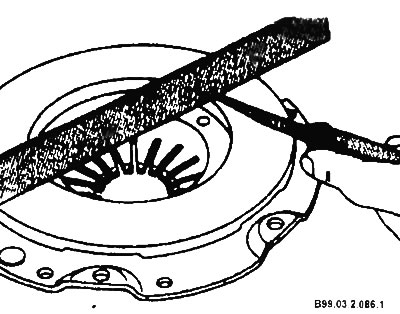
If there are grooves, they must be removed by machining or the parts must be replaced with new ones.
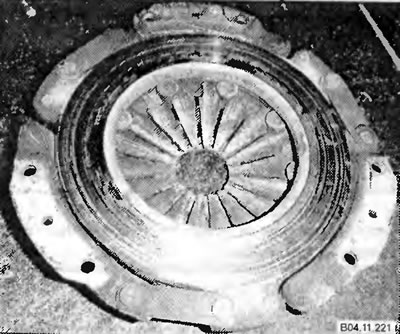
Typical pressure plate with signs of wear (furrows)
